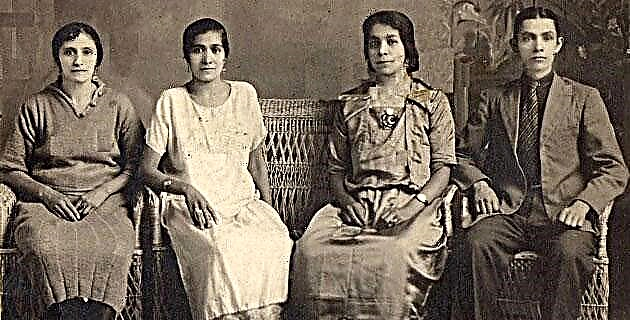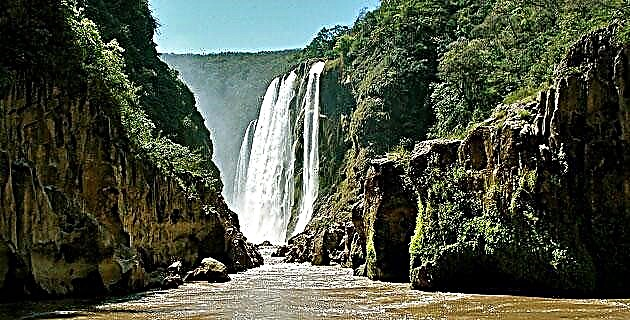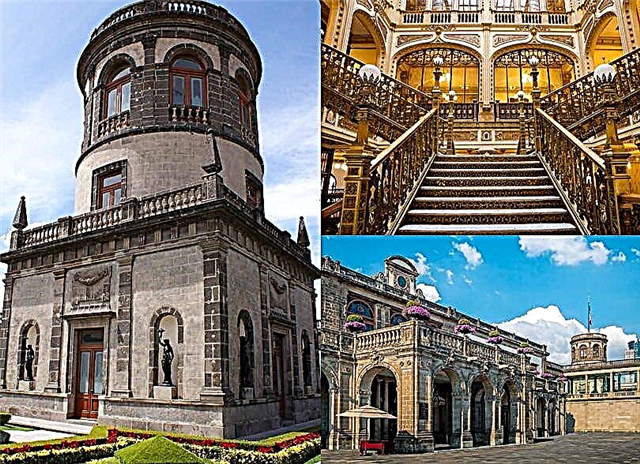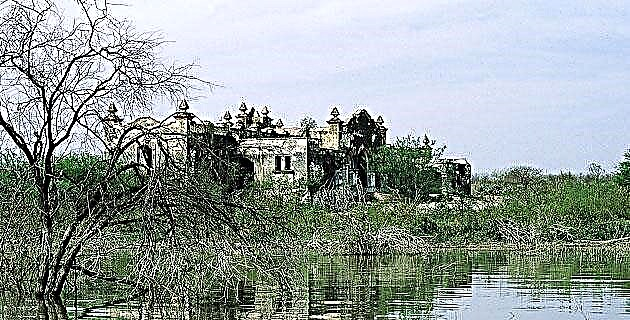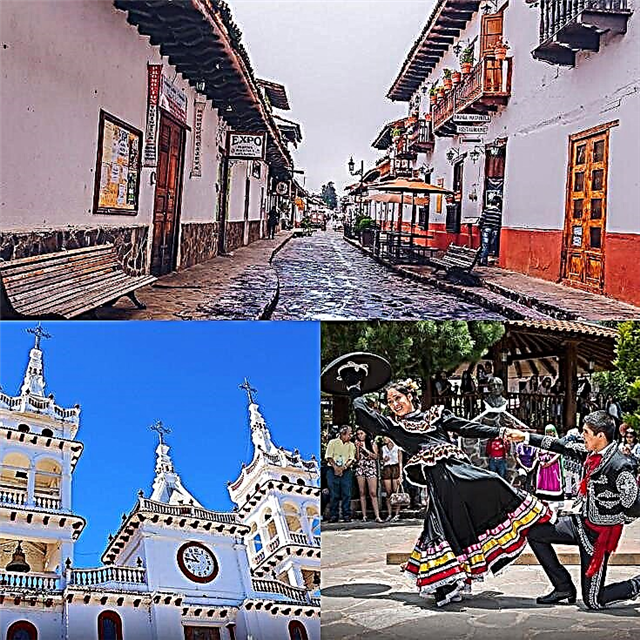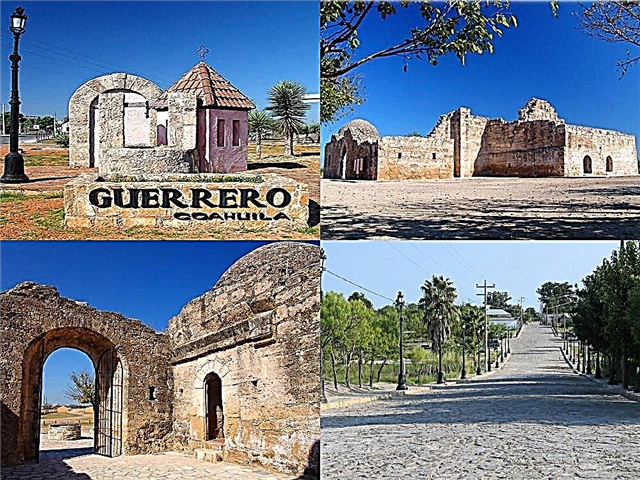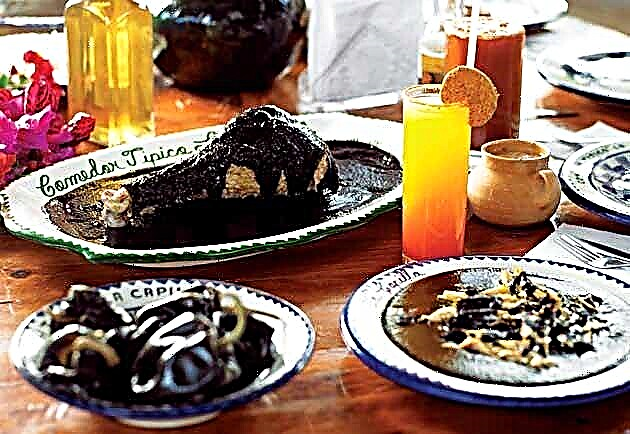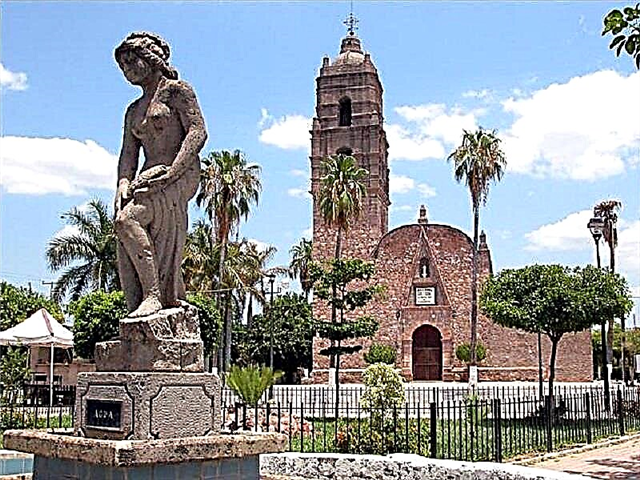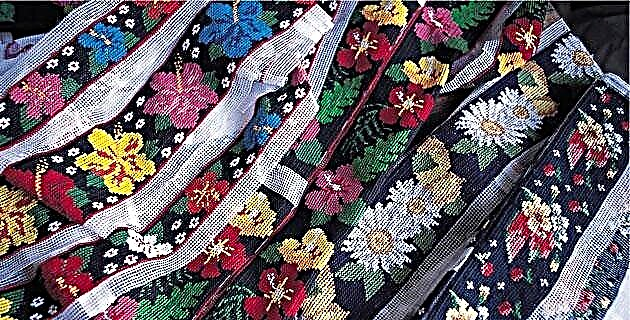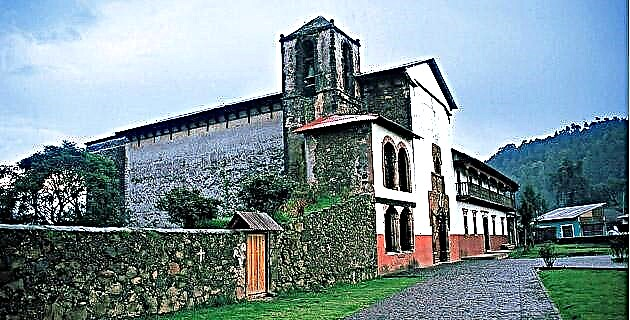
We decided to travel by road and enter the Michoacan region, abundant in natural landscapes and traditions, and as we toured the towns of the Tarasca Plateau we did not cease to be surprised by the enormous architectural wealth of a religious nature, built during the period of evangelization (16th centuries and XVII), which we find in our path.
We had to do research on the subject to be able to explain the beauty and workmanship of the temple ceilings, or the details of the crosses and facades. And it is that with the arrival of the first Franciscan and Augustinian missionaries, during the 16th century, a process of founding “Indian hospitals” began, an idea that was propagated in the region by the first bishop of Michoacán, Don Vasco de Quiroga. They constituted an architectural complex formed by a convent or parish on whose religious congregation the hospital depended.
Regarding the materials used, the Tarascan plateau region is characterized by the use of walls of volcanic stone joined and covered with adobe and carved quarry covers. These first constructions were roofed with pine wood boards (known as tejamanil) and later covered with red clay tiles.
The interior of these ceilings, meanwhile, was covered by large planks in the form of an inverted "trough", most of them with curved and trapezoidal designs and which are named in Spanish chronicles as "coffered ceilings". These are also decorated with images of Marian litanies, angels, archangels and apostles, a reflection of the faith to which the ancient inhabitants of this area were tried to submit. In most cases they are painted along the entire ceiling of the nave and have become one of the main artistic values of the region.
Another characteristic feature of these religious groups is the atrial cross, many of which are preserved in the 16th century temples of the Tarascan plateau, in these crosses the work of indigenous labor is evident. For its part, the atrium in many cases has lost its original meaning as it has been modified in times after its construction and has been transformed into civic squares or places for the exchange of products.
As regards the interior naves of the temples, most of them are rectangular and a fifth of their length was destined to the presbytery, while the place destined for the choir was placed on top, just at the entrance of the temple , and was integrated into it by means of a wooden ladder.
Another important characteristic of these temples is formed by their covers, since they show an enormous Plateresque, Hispano-Arab and indigenous influence.
San Miguel Pomacuaran
Trying to trace a travel route between the small, but wonderful temples of the Tarasca Plateau, we began the tour in our Aprio de Nissan in this town that belongs to the municipality of Paracho.
The access is framed by a small gabled roof that functions as a bell tower and in which the loudspeaker is placed, through which, all day, messages are being given to the population in the indigenous language. In front of the temple, towards the northwestern side, there is a construction that today is used as a kitchen, but which was surely the huatapera (Purépecha word that means “meeting place”), where the ancient indigenous rulers met.
Although it was originally built during the sixteenth century, on a wall we read the date 1672. It probably corresponds to the date it was rebuilt. It has a single rectangular-shaped nave, delimited by Diego stone and mud walls encrusted with a layer of lime and the floor is made of possibly original wooden planks. The ceiling is a coffered ceiling with paintings representing the Old and New Testaments, a magnificent example of popular Michoacan decoration.
Santiago Nurio
We follow the road to this town and head to the main square, which is dominated by a temple with a sober façade, made of a single cloth and which still preserves traces of flattened lime with false ashlars (carved stone of a construction) painted in Red. In front of the temple, its atrial cross is still visible, the base of which is decorated with cherubs on all four sides.
As soon as we crossed the access door, we were amazed at the magnificent spectacle inside the small temple. Much of the decor is richly painted.
The sotocoro is one of the most beautiful pieces of polychrome in the entire Tarascan plateau. It is made with a tempera technique, based on glazes, with various religious images such as the Bishop of Michoacán, Don Francisco Aguiar y Zeijas, and the Archangel Rafael with little Tobías and the healing fish in his hand.
The main altarpiece, dedicated to Santiago Apóstol, was made during the 19th century by an unknown author and is made of carved, assembled, polychrome and partially gilded wood.
The huatapera, like the parochial temple, is of modest construction on the outside, it consists of a small rectangular nave with a very simple quarry facade with a semicircular arch; but it has a very beautiful decoration inside. The nave is covered by a majestic coffered ceiling decorated with biblical religious images. The main altarpiece is in the Baroque style and is dedicated to the Immaculate Conception, which is represented by means of a fine image of wood stewed in gold. At the ends we see exquisite fresco paintings that frame the altarpiece.
San Bartolomé Cocucho
Just 12 kilometers from Santiago Nurio, is San Bartolomé, located in one of the highest places in the entire Sierra Purépecha. Upon entering the town, the first thing we observed were the innumerable workshops in which the famous "cocuchas" are made, huge clay pots made exclusively by women and which originally had two uses, one was for the storage of food and water. , the other was like funeral urns. At present they are in high demand as an ornament, since because they are burned in the open, abstract and unrepeatable forms are produced.
We continue along Benito Juárez Street until we come across the San Bartolomé temple, which is built with stone and mud. Although it is from the 16th century, between 1763 and 1810 it was modified. The sotocoro is designed in a trapezoidal shape, in which scenes full of color and movement are represented. At the center of the structure you can see Santiago Apóstol (in his personification as a mata moros) mounted on his white steed. This sotocoro is considered one of the richest and most representative of all Michoacan carpentry. The temple also has three quite old altarpieces.
San Antonio Charapan
It is a slightly larger town than the previous ones and its most important construction is the Parroquia de San Antonio de Papua, a large temple, in whose main altar a neoclassical quarry altarpiece stands out. In the atrium of the parish there is still an atrial cross decorated with a Franciscan shield, on which the date 1655 is read.
Almost behind the temple is the chapel of the Colegio de San José, which is currently known as the Pedro de Gante Chapel. Its façade is made of quarry and its gabled roof with shingles, which is nothing more than a roof with broken wood sheets, characteristic of the entire region. Its façade is very sober and is decorated with leaves, flowers, angels' faces and shells, all sculpted in quarry. All this religious complex is located on a large platform that stands out over the main garden and the rest of the population.
San Felipe de los Herreros
Distant some 12 kilometers to the southeast, San Felipe owes its name to the fact that it was the center of the blacksmith industry during colonial times and part of the 19th century. The town was founded in 1532 as a congregation of four towns and Don Vasco de Quiroga granted Señor San Felipe as patron saint. It is one of the few towns on the Tarascan plateau that does not have an indigenous name.
Its main attraction is its parish temple, obviously dedicated to San Felipe. The temple has a very austere facade with flattened white and a small portal with a semicircular arch. Although this temple lacks paintings in the coffer of the ceiling, inside, in the part of the choir, there is a wonderful relic: an organ that is known as "positive", "wing" or "realejo by profession", the most important in all of Mexico. It is thought to be one of the first to be built in our country by indigenous artisans in the 16th century and, according to scholars, there are only seven of this type in the entire world, which makes it a unique piece of religious art. world.
San Pedro Zacan
Due to its proximity to the Paricutín volcano, it was one of the towns affected by its eruption, back in 1943.
Right in the center of the town, is the Chapel of the Immaculate Conception of Santa Rosa of the Hospital de San Carlos and the hospital, both dating from the 16th century, are volcanic stone constructions with wooden structure ceilings and, the hospital, in addition with clay tile. The original facade of the chapel disappeared and in its place the door has only a wooden arch. Inside, there is a roof with a wooden coffer completely covered by beautiful paintings that represent praises to Mary. The predominant colors in the paintings are white and blue, since these are those related to the Immaculate Conception.
On the south side of the chapel we can still see what in its time functioned as a hospital for Indians, currently, in one of its spaces, a small shop selling clothes embroidered in cross stitch has been adapted, a wonderful handicraft made by the women of this population.
Angahuan
It is a small town nestled on the slopes of Pico de Tancítaro, just 32 kilometers from the city of Uruapan. It has an extraordinary hospital complex dated 1570. Like most of the Franciscan constructions of the 16th century, in the temple of Santiago Apóstol the skill and performance of the indigenous workforce is very noticeable, both in the design and in the decorative details of the main cover.
It is built in stone and adobe and, unlike others, its magnificence is found in the main portal, not in the paintings of its coffered ceiling, since this temple lacks them.
Its entrance portal is considered one of the best examples of Mudejar art in all of Mexico. It is covered with rich phytomorphic reliefs, trees of life that have angels in their branches and, on the arch, almost at the top of the decoration, stands out an image in high relief of the Apostle Santiago el Mayor, dressed in his pilgrim costume.
San Lorenzo
After traveling 9 kilometers we reached San Lorenzo. The parish temple preserves its 16th century facade almost in its entirety and, in front of it, on what is now the main square, but surely it was part of the parish atrium, you can see its beautiful atrial cross dated 1823. The architectural attraction of San Lorenzo is made up of his huatapera and hospital that are located next to the former. Its interior coffered ceiling is finely decorated with paintings that represent passages from the life and work of the Immaculate Conception of Mary and, unlike the other temples, there are a series of floral offerings dedicated to the image of the Virgin.
Capacuaro
From the road you can see the temple and we accessed it after crossing a gastronomic market that is installed on weekends. In its stone façade, the access portico carved in quarry with fine decoration of shells, cherubs and various phytomorphic motifs stands out. In general terms, it can be said that it is perhaps the most austere religious group of all, perhaps due to its location, a little further outside the mountainous area.
This is how we look out over this Michoacan region in our comfortable Aprio de Nissan, and we return home happy to appreciate more the skill of the Purépecha indigenous hands, true artists who left soul and heart in these relics of Mexican religious art from the 16th and 17th centuries.

